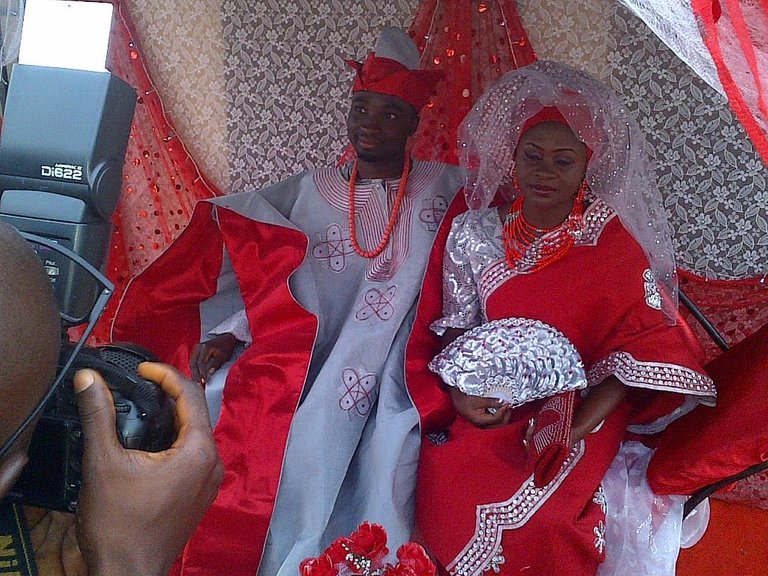In the first part of this post, I started discussing what the wedding process entails in a typical Yoruba culture. I started from how a man has the liberty to either meet his potential wife by himself or matchmade by family, friends, or even acquaintances to the initial visit to the house of the bride to see her family during which a date for the wedding would be fixed and a bride list/price given, and finally to the various activities that Mark the day of the wedding itself.
On the day of the wedding, both the groom and the brides family have settled down and members of each family introduced by the two MC (Alaga ìdúró for the bride's side and Alaga inaro for the groom's side), and the groom has settled on the stage prepared for the couple-to-be after the usual fun and drama that accompanies it.

Next on the agenda is the invitation of the bride to the venue of the wedding. This is usually the most dramatic part of the wedding. The first of the drama is the Alaga inaro announcing that the plane that would convey the bride from her home to the venue of the wedding would require fuelling and the groom's family, together with the groom himself, would have to pay for the fuel in an obvious attempt to raise funds. After the raising of funds, the wives of the bride's family go ahead and bring the bride but not without another mini-drama.
A few pseudo-brides are usually first presented to the groom and his family and these are usually outrightly rejected. Eventually, the real bride is brought amidst drumming, dancing, and singing by the bride's friends and wives of the bride's family. The first point of call by the bride is the groom's parents and family. She would kneel down to greet them and they, in turn, pray fervently for her. Next, the bride heads over to her parents and family's to greet them and they also respond with another session of prayer. Lastly, with intense dancing/drumming/singing, the bride heads to the stage where the groom is already seated and takes her seat beside him.
After the settling of the bride besides the groom, the MC calls for an official letter stating the request of the groom's family to the bride's family. The letter is brought by a representative of the groom's family to the MC and a pre-nominated, yet-to-mature young girl from the bride's family is called upon to read the contents of the letter.
The process of reading usually also involves a bit of fund-raising drama. The young girl who must have been thought of what to do prior to that day would suddenly stop reading the letter halfway and pretend to be stuck, a condition which only fundraising can cure. After collecting another round of money, the letter is eventually read and a response which must have been ore-written by the bride's family is sent back to the groom's family.

Thereafter, the MC calls for the solemnization of the union. This is usually conducted by a neutral person that must have been pre-selected. The bride is called upon to select an object she would love to be engaged with among all the bride list brought by the groom's family. She picks the object that must have been agreed upon by herself and the grooms - usually a ring. This is then used to solemnize the two people followed by a series of prayers.
What usually follows is a vote of thanks by the representatives of both families along with music, dancing, and plenty to eat. Thus, the Yoruba wedding is complete.
Thanks for telling us about this part of Yoruba culture!
You are welcome and it's a pleasure
Yoruba wedding sweet o
Ẹ dey sweet die